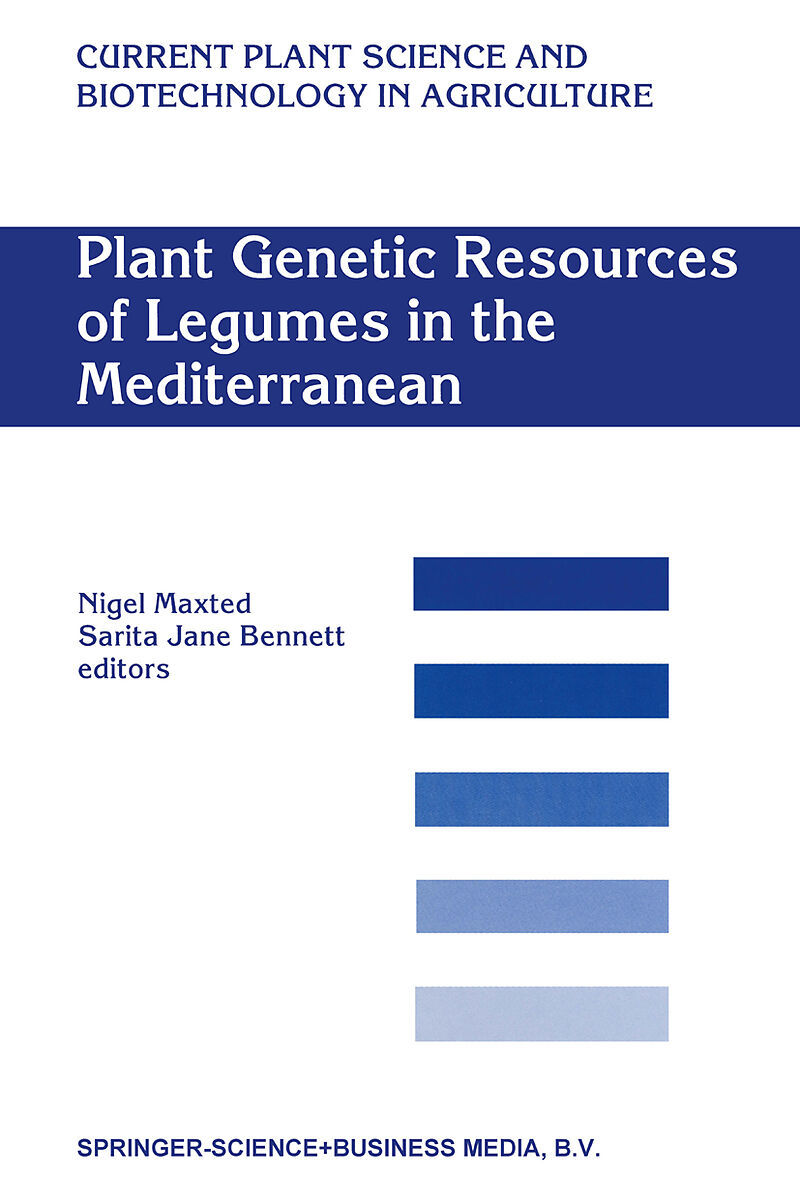Plant Genetic Resources of Legumes in the Mediterranean
Einband:
Fester Einband
EAN:
9780792367079
Untertitel:
Current Plant Science and Biotechnology in Agriculture 39
Herausgeber:
Springer Netherlands
Auflage:
2001
Anzahl Seiten:
408
Erscheinungsdatum:
31.05.2001
ISBN:
0792367073
Genetic erosion, that is, the loss of native plant and genetic diversity has been exponential from the Mediterranean Basin through the Twentieth century. This careless eradication of species and genetic diversity as a result of human activities from a 'hot-spot' of diversity threatens sustainable agriculture and food security for the temperate regions of the world. Since the early 1900s there has been a largely ad hoc movement to halt the loss of plant diversity and enhance its utilisation. The Convention on Biological Diversity and Food and Agriculture Organisation of the United Nations International Undertaking on Plant Genetic Resources, both highlight the need to improve conservation methodologies and enhance utilisation techniques. It has been argued that the most important component of biodiversity is the genetic diversity of crop and forage species used to feed humans and livestock. These cultivated and related wild species provides the raw material for further selection and improvement.
Leguminosae species are of major economic importance (peas, chickpeas, lentils and faba beans, as well as numerous forage species) and provide a particularly rich source of protein for human and animal foods. Their distribution is concentrated in the Mediterranean region and therefore the improvement of their conservation and use in the region is critical.
This text is designed to help ensure an adequate breadth of legume diversity is conserved and to help maximise the use of that conserved diversity. The subjects of conservation and use of legume diversity, the Mediterranean ecosystem and taxonomy of legumes are introduced. Generic reviews of the taxonomy, centre of diversity, ecogeographic distribution, genetic diversity distribution, conservation status, conservation gaps and future research needs are provided, along with a discussion of the importance of rhizobia to the maintenance of legume diversity. Current ex situ and in situ conservation activities as well current legume uses are reviewed. In conclusion future priorities for ex situ and in situ plant genetic conservation and use of Mediterranean legumes are highlighted. All contributors look forward rather than simply reviewing past and current activities and therefore it is hoped that the identification of genetic erosion, location of taxonomic and genetic diversity and promotion of more efficient utilisation of conserved material will be enhanced.
Inhalt
Section 1 Introduction.- 1 Conservation, Diversity and Use of Mediterranean Legumes.- 2 Ecogeographic Environment of the Mediterranean.- 3 Legume Diversity in the Mediterranean Region.- Section 2 Genetic Diversity of Legumes in the Mediterranean.- 4 Clovers (Trifolium L.).- 5 Medics (Medicago L.).- 6 Chickpeas (Cicer L.).- 7 Lentils (Lens L.).- 8 Vetches (Vicia L.).- 9 Grasspea and Chicklings (Lathyrus L.).- 10 Peas (Pisunr L.).- 11 Lupins (Lupinus L.).- 12 Minor and under-utilised legumes.- 13 Root-nodule Bacteria.- Section 3 Conservation of Legumes in the Mediterranean.- 14 Ex Situ Conservation of Grain Legumes.- 15 Ex Situ Conservation of Forage Legumes.- 16 In Situ Conservation.- Section 4 Utilisation of Legumes in the Mediterranean.- 17 Utilisation of Grain Legume Diversity.- 18 Utilisation of Forage and Pasture Legume Diversity.- Section 5 Afterword.- 19 Future Conservation and Utilisation Priorities.

Leider konnten wir für diesen Artikel keine Preise ermitteln ...
billigbuch.ch sucht jetzt für Sie die besten Angebote ...
Die aktuellen Verkaufspreise von 6 Onlineshops werden in Realtime abgefragt.
Sie können das gewünschte Produkt anschliessend direkt beim Anbieter Ihrer Wahl bestellen.
Loading...
Die aktuellen Verkaufspreise von 6 Onlineshops werden in Realtime abgefragt.
Sie können das gewünschte Produkt anschliessend direkt beim Anbieter Ihrer Wahl bestellen.
| # | Onlineshop | Preis CHF | Versand CHF | Total CHF | ||
|---|---|---|---|---|---|---|
| 1 | Seller | 0.00 | 0.00 | 0.00 |
